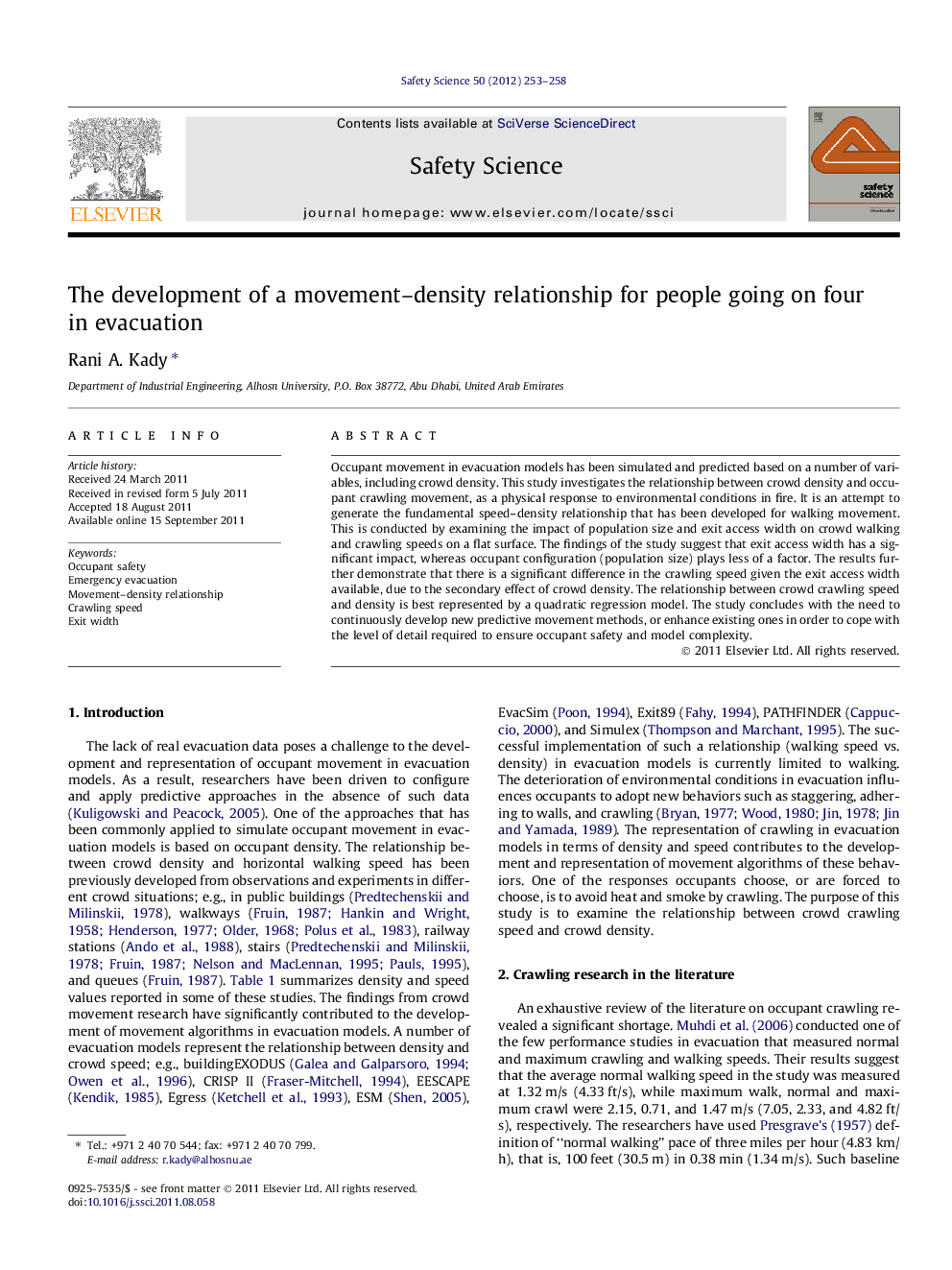| کد مقاله | کد نشریه | سال انتشار | مقاله انگلیسی | نسخه تمام متن |
|---|---|---|---|---|
| 589577 | 878710 | 2012 | 6 صفحه PDF | دانلود رایگان |

Occupant movement in evacuation models has been simulated and predicted based on a number of variables, including crowd density. This study investigates the relationship between crowd density and occupant crawling movement, as a physical response to environmental conditions in fire. It is an attempt to generate the fundamental speed–density relationship that has been developed for walking movement. This is conducted by examining the impact of population size and exit access width on crowd walking and crawling speeds on a flat surface. The findings of the study suggest that exit access width has a significant impact, whereas occupant configuration (population size) plays less of a factor. The results further demonstrate that there is a significant difference in the crawling speed given the exit access width available, due to the secondary effect of crowd density. The relationship between crowd crawling speed and density is best represented by a quadratic regression model. The study concludes with the need to continuously develop new predictive movement methods, or enhance existing ones in order to cope with the level of detail required to ensure occupant safety and model complexity.
► We attempt to generate the fundamental speed–density relationship for crawling.
► The relationship is best represented by a quadratic regression model.
► We examine impact of population size and exit width on walking and crawling speeds.
► Findings suggest that exit access width has a significant impact.
► Occupant configuration plays less of a factor on speeds.
Journal: Safety Science - Volume 50, Issue 2, February 2012, Pages 253–258